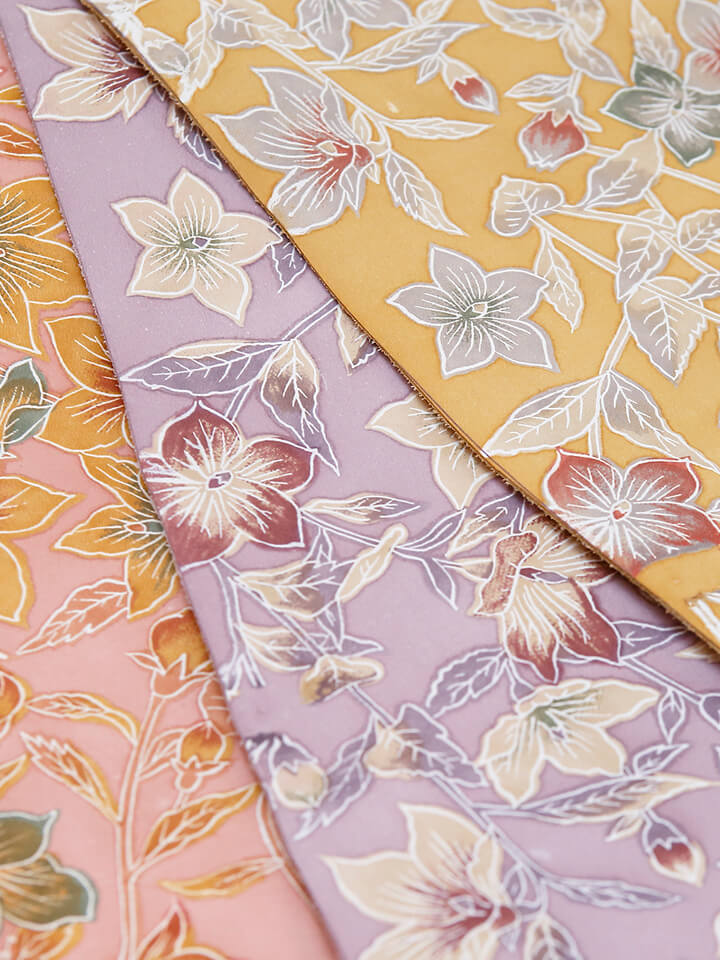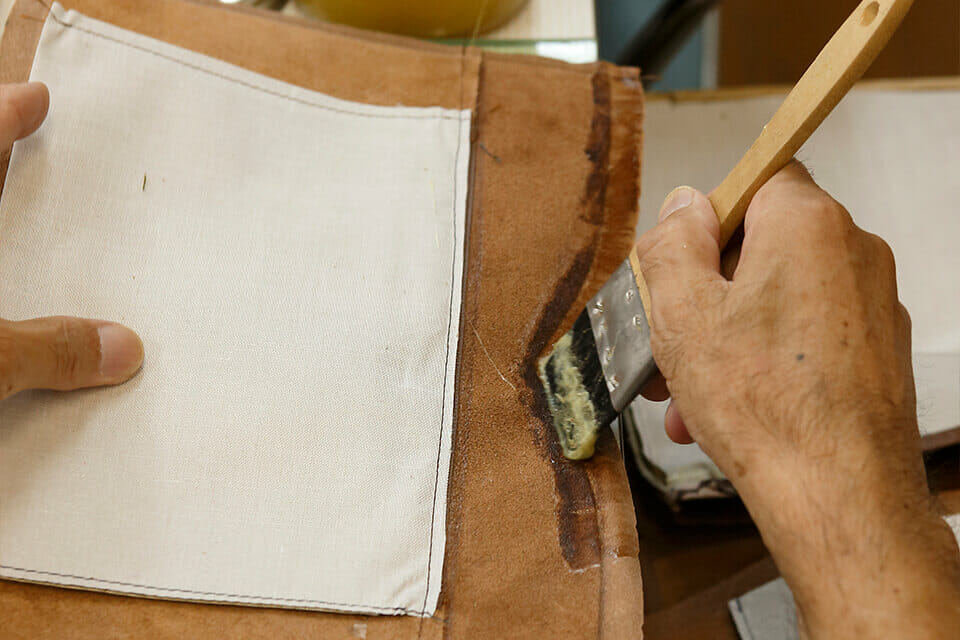
Creative: Coruba
Coruba:Mixing traditional technique with modern sensibility The ever evolving Kyo Yuzen

Leather Yuzen is made by gracefully dyeing leather with the traditional Kyo-Yuzen technique. It is said that the company has called Kyo-Yuzen "sarasa" since its predecessor, Masumoto Shoten, and used it to make small items. Takenori Masumoto, the second generation, separated the company’s leather division and launched Coruba. There, he reexamined this traditional Kyo-yuzen and started the "Yusai" brand with a modern touch.
Mr. Masumoto asked a skilled craftsman in Kyoto, who he had known since his father's generation, to do the dyeing. Initially, the existing plate was used, but since Kyo-yuzen was originally used for kimono, they created an original that would fit bags and wallets. The traditional Yuzen only had Japanese floral patterns, but they added new patterns such as poppies, and pansies, and created original soft neutral colors. There were many difficulties up to this point. First of all, they couldn’t get the color that they wanted.
Also, if the leather is too hard, it will be easily dyed, but it will be difficult to attach it to the net, and if it is too soft, the pattern will crack. By kneading hard leather with a staking machine and developing a unique leather that has flexibility and elasticity, they were able to achieve the desired vivid color and pattern. "Hand-printing is a process of making plates for each color and manually layering the colors one by one. But the more colors you use, the more plates you have and the more time and effort it takes."
Recently, there have been attempts to apply enamel processing to Yuzen leather. The leather is coated with transparent polyurethane to make it water resistant, and the clear and gentle luster enhances the Yuzen dyeing. Mr. Masumoto wants to stick to domestic production from leather making to sewing. "I want to try all the leather processing with Kyoyuzen. There are still possibilities."

At Coruba, which is particular about domestic production, the techniques are handed down by sample masters and veteran craftsmen in order to train young craftsmen in-house.

If you look at the precise surface of the leather, you can see how accurate the craftsmen are.
Yuzen dyeing is a dyeing technique which features a delicate glue placement technique, a variety of splendid patterns and elegant white lines that border the patterns. This white outline is made by placing thread glue for resist dyeing. The founder is said to be Miyazaki Yuzensai, a fan-painter who was active in Kyoto in the middle of the Edo period. The technique of Kyo-Yuzen, which was born in Kyoto, was later brought to Kanazawa, the castle town of the Kaga domain, by Yuzen-sai himself, and the technique that flourished here is called Kaga Yuzen.
